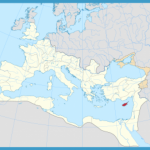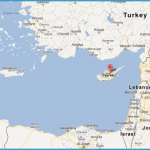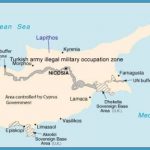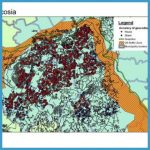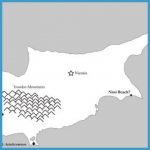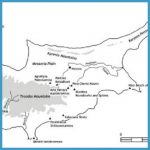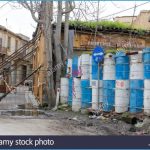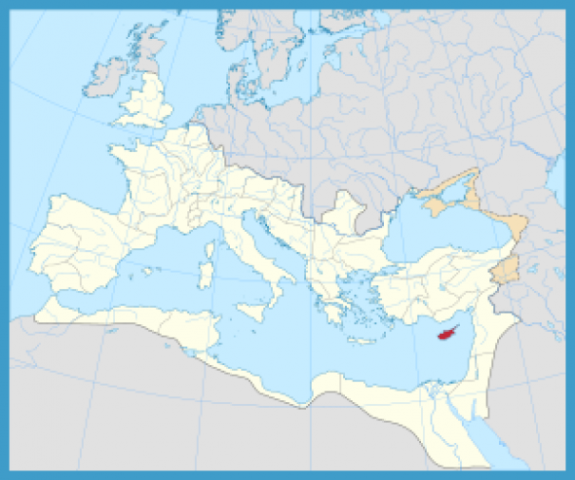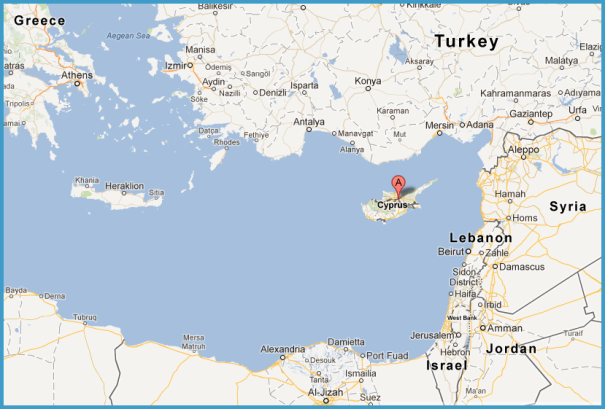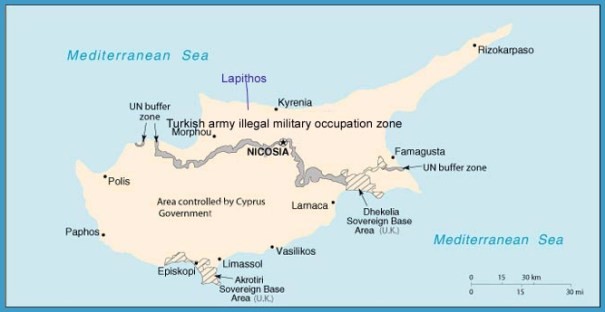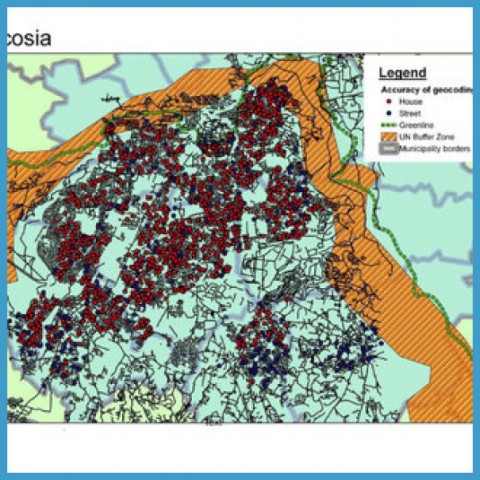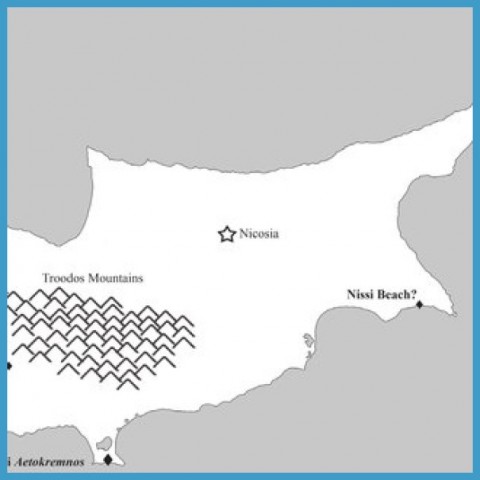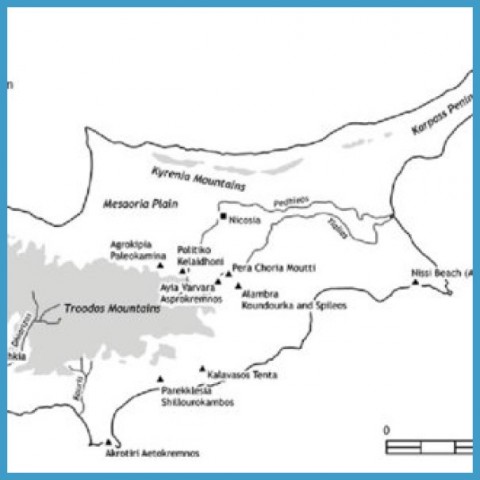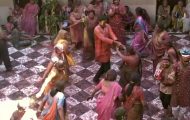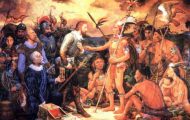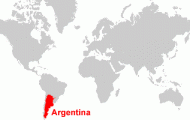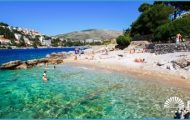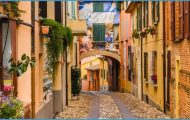From the workshops of the Cyprus Handicraft Centre
Cyprus Handicraft Centre. On Athalassa Avenue, right at the traffic lights at the start of Nicosia-Limassol highway, stands the Cyprus Handicraft Centre, which was established in 1977. Its main object is the preservation and further development of Cypriot traditional folk art. Folk art in Cyprus goes back to the Neolithic era (7.500 B.C.) with the well known combed decoration on vases. It continues to the Bronze Age, the Byzantine period and reaches the current pottery of Foini and Kornos or the lacemaking of Lefkara region. Within the Centre there are workshops for weaving, embroidery, wood-carving, metal-working, pottery, etc. The visitors can watch the craftsmen at work or they can, if they wish, buy some souvenirs.
The Omeriyeh Baths. The Omeriyeh Baths, a remnant of the Ottoman administration, are the only ones of their kind still operating in Nicosia. They are situated in old Nicosia, very near the Archbishopric and the Omeriyeh mosque. Their origins are shrouded in uncertainty. Some maintain that where the baths are now, a church used to stand. Others identify the baths with the domicile of a Turkish official. Others still, claim that the baths were built to satisfy religious needs, directly related to the mosque on the next street. As is known, before attending prayers, Muslims wash at nearby cisterns, baths or fountains.
Nicosia Race Course. Cyprus has many horse-racing enthusiasts who regularly attend the horse races carried out at the Nicosia Race Course in
Nicosia Municipality – Nicosia City Map
Agios Dometios, the north-western suburb of Nicosia. The history of horse races in Cyprus starts with the arrival of British troops in Cyprus, in 1878.
The International Conference Center. The imposing and spacious International Conference Center, was constructed in 1988. In the same year it hosted the Congress of Foreign Affairs Ministers of the non-aligned countries and immediately after the Conference of Finance Ministers of the Commonwealth. The Center, whose services are of very high standards, includes offices, exhibition halls, audiovisual equipment as well as seminar/conference/lecture rooms for as many as 1250 persons.
Museum of the History of Cypriot Coinage. The Museum is housed in the Bank of Cyprus Cultural Centre at Faneromeni. The visitor can see an appreciable collection of specimens which span the entire spectrum of Cypriot coinage, from the earliest types struck in the island in the 6th c.
B.C. to the first coins issued by the Republic of Cyprus.
Sport grounds and Stadia of Nicosia. Nicosia has a number of stadia spread throughout the capital’s built-up area, though the sport grounds and stadia of the Cyprus Sport Organization, the highest sport authority in Cyprus, are strongly recommended to the foreign visitors. The G.S.P. stadium at the entrance of Nicosia, with a capacity of 23.000 spectators, caters mainly for football and athletics. The Lefkotheo Indoor Sports Hall, can host 3.000 persons and is mainly used for basketball, handball, volleyball, rhythmic and olympic gymnastics as well as other events. The Olympic Swimming Pool has a capacity of 3.000 persons. Besides, the Olympic Shooting Club of Nicosia, can accommodate 500 persons, while the Eleftheria Indoor Sports Hall has a capacity of 6.000 spectators and is used for a large variety of sports, particularly basketball, handball, volleyball, rhythmic and olympic gymnastics. Visitors can make use of the above grounds and stadia through proper contacts.
Settlements around Nicosia town within the broader urban area Aglangia, Geri, Latsia, Lakatameia, Anthoupolis
Aglangia, at least a medieval settlement, currently a suburb of Nicosia and an independent municipality, lies to the south-east of the capital. However, archaeological sites within its administrative boundaries point out to a history dating back to 3000 B.C. From Athalassa or from the road of Nicosia-Larnaka three significant hills
Athalassa dam (the table lands or “mesas” of “Aronas” and “Leondari Vouno” and the conical hill of “Kafizin”) are visible. Aronas, 181 metres a.s.l, lies within the occupied part of Cyprus, Kafizin hides antiquities at least of the Hellenistic period, while Leondari Vouno has a history going back to about 3000 B.C. The remains of a medieval castle, known as La Cava, are still present on the Leondari Vouno, and include remnants of two towers, a cistern, etc. Besides, on the castle, according to reliable sources, a monastery was functioning during the medieval period. Currently, in the municipality area of Aglangia lie several significant sites of interest, like: the University of Cyprus, the Hotel and Catering Institute, the Higher Technical Institute, the Agricultural Research Institute, the Cyprus Broadcasting Corporation, the Police and National Guard Headquarters, the Cyprus International Conference Center, etc. Two important forests, at Athalassa and the Pedagogical Academy, lie within Aglangia.
Geri, in south-east of Nicosia, despite its proximity to the capital of Cyprus, retains its agricultural character. There are two churches, that of Panagia (Virgin Mary) on a conspicuous rise, originally built in the 16th century but restored in 1814, and the modern church of Agios Minas with the Heroes Monument in its courtyard.
Latsia, a municipality and part of the major Nicosia urban complex, lies south of Nicosia, linked both by the old and the new road of Nicosia-Limassol. Its three industrial zones have attracted a significant number of industries, while the setting up of refugee settlements contributed to the increase of Latsia’s population.
Pano and Kato (Upper and Lower) Lakatameia is no more a twin village but a unified municipality. Lakatameia is no more famous for its yogurt and its basket-making, while the last traces of its two water-mills have almost disappeared. East of the settlement lies the small airfield of Lakatameia, set up by the British during the Second World War, currently used by small private aircraft. The old monastery of Archangelos Michail lies in Lakatameia too. Anthoupolis, a planned refugee settlement with 1.027 houses- one, two and three-storeyed – lies within the administrative area of Lakatameia. Its population of almost 3.500 persons comes from as many as 90 occupied villages of Cyprus. The visitor who wishes to see, on spot, the temporary resettlement of displaced persons, a phenomenon after the Turkish invasion, can visit Anthoupolis.
Map of Nicosia, Cyprus – Exact Time Photo Gallery
EXPLORING NICOSIA COUNTRYSIDE – PLAINS
(a) Plain areas west of Nicosia
Route: Agioi Trimithias, Palaiometocho, Kokkinotrimithia,
Mammari, Deneia, Akaki, Meniko, Peristerona, Astromeritis, Potami
The church of Agios Kyprianos, Meniko
This is a pleasant route, along plainland on the way to Troodos. Beautiful modern houses are being built along the main road, while the red soils of Morfou plain are cultivated either with dry-fed or irrigable crops. Agioi Trimithias. The landscape is beautiful, particularly in winter and spring while in summer the true Mediterranean climate of Cyprus with its rainless summers is reflected on its dry and rather monotonous scenery. Palaiometocho. It is a large village expanding along the main road of Nicosia-Troodos as well as around its periphery. A few traditional houses are worth observing, while the church of Panagia Odigitria is a large modern building with domes, semi-domes, arches, skylights and two lofty belfries. Kokkinotrimithia. The visitor can observe the red mud bricks with which traditional houses were built in the past, as well as the chapel
of Archangelos Michail dating back to the 16th century. The new church of Agios Georgios, of Byzantine style, is built on the foundations of an original 11th or 12th c. church. The Cyprus Forest Industries lie within the boundaries of Kokkinotrimithia. Mammari. At the base of the hill, south of the settlement, the quarrying of hewn calcarenite blocks has been going on for centuries. Many Nicosia houses were built with this rock. Deneia. It is a semi-occupied village with U.N. peace-keeping force stationed in the settlement. A pottery, owned by a Kyrenian refugee, producing handmade objects with mythological designs, is worth visiting. Akaki. The relatively large village of Akaki with its delapidated water-mills, its centuries-old olive-trees, and its peculiar chains of wells is an interesting village for the foreign visitor. Machairas mentions that the village was founded by King Henry. Currently, Akaki, apart from a Secondary School, enjoys all types of services. At the entrance to the village stands the monument of Archbishop Makarios, the late president of the Republic. Meniko. The most important site of interest, in Meniko is the church of Agios Kyprianos. The church of Agios Kyprianos (St Cyprian) is one of very few in the whole Orthodoxy. Fragments of the scull are found in the church, kept in a silver reliquary of 1805. It is mentioned that King Peter (1359-1369) drank water from the holy well and was at once cured. He ordered the church to be destroyed and another new church was built anew. The present church dates back to 1846.
The church of Agioi Varnavas and Ilarion, close to the Moslem mosque (Peristerona)
Peristerona. It is built on the left bank of the homonymous river. Before the Turkish invasion (1974) Greeks and Turks lived together, with the Moslem mosque and the Orthodox church standing next to each other. Peristerona is famous for its five-domed, three-aisled Byzantine church, dedicated to saints Barnabas and Hilarion. Most probably the interior of the church was entirely painted. The narthex was added later, while the well-carved west door is probably contemporary. The restored iconostasis dates from 1549 A.D. In the narthex a wooden chest is preserved on which is painted a scene representing a siege. Other belongings of the church are two disks of the 15th century and various ecclesiastical blogs among which a gospel printed in Venice in 1604. The five-domed church of Peristerona most probably was built in the 11th century A.D. Astromeritis. The compact settlement preserves some very rare traditional houses worth seeing, while modern houses are growing along the main road. Makeshift platforms are placed along the central road of Nicosia-Troodos to serve passers-by with seasonal fruit and vegetables.
On a rise stands the church of St. Evxifios, built in 1876 on the site of an older church. The church contains a wood-carved iconostasis of artistic value as well as some interesting old portable icons. Potami. The most interesting site in the village is the church of Agios Georgios. An architectural frieze runs around the top of the church, broken above the north door by a lion’s head. In the interior are preserved traces of paintings which indicate that originally the church was most probably completely painted. The church most probably dates back to the Venetian period and according to a local tradition it was built by the queen Catherine Cornaro.

